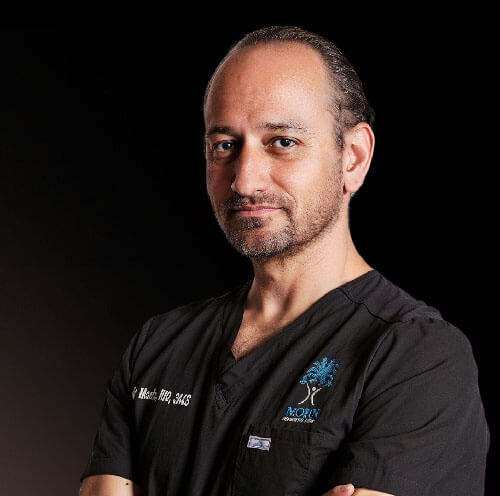
A question always comes to mind for diabetes patients: Can you reverse type 2 diabetes? Gastric bypass surgery is a bariatric procedure that aims to give you more power to lose weight. Patients often turn to gastric bypass (scientifically referred to as Roux-en-Y) after struggling to drop the excess pounds all on their own. These men and women find themselves obese after years of constant struggle against weight gain, and the excess pounds seem to cling to the body stubbornly.
No amount of exercise or extreme dieting can cause the weight to come off to any permanent degree. Any pounds that you lose often come rushing back with a vengeance. Such is the life of someone struggling with obesity with no end in sight. But gastric bypass surgery aims to end all the struggle and help you lose weight safely and effectively with long-term success.
Studies now show that gastric bypass can not only help you lose up to 70% of your excess weight or more but also obesity comorbidities like type 2 diabetes can diminish or disappear completely following this popular weight loss surgery.
Would you be interested in how gastric bypass surgery works and what it can do for you? Weight loss surgeon Dr. Moein specializes in this life-enhancing procedure at Healthy Life Bariatrics in Los Angeles, CA. Not only can gastric bypass help you achieve sustainable weight loss, but it is also a proven method to reverse diabetes. Many patients have seen their type 2 diabetes diminish or resolve entirely after undergoing this procedure. Sit back, relax, and get ready to learn all about the Roux-en-Y gastric bypass and how it can transform your life through long-term weight loss and improved health.
What is Gastric Bypass Procedure & How Does it Work?

Gastric bypass surgery came to be after many attempts to help patients lose weight through surgical means. In 1954, A.J. Kremen introduced the world to jejunoileal bypass surgery. The revolutionary bariatric technique sought to restrict the number of calories the patient could absorb through digestion. The patient’s stomach was rerouted to a portion of the intestine. This diversion restricted the amount of calories and nutrients the patient could consume, which was intended to result in effortless weight loss.
The problem with the jejunoileal bypass was that patients who underwent this experimental surgery ended up with nutritional deficiencies. The diversion to the intestine ended up being too severe, and the outcomes of the surgery were less than favorable.
Other surgeries have been attempted over the years in the same vein, each concentrating on a combination of food restriction and inhibited bodily absorption. Some of these surgeries, such as the biliopancreatic diversion, duodenal switch, and gastric bypass, are still used today.
These procedures don’t just limit absorption. They also utilize techniques restricting how much food patients can comfortably consume. With gastric bypass surgery, the method works like this.
Gastric Bypass Los Angeles in Details
First, the bariatric surgeon will make several small incisions (around five). These cuts act as entry points for the laparoscopic camera and accompanying tools that the surgeon will use to shrink and reroute the stomach.
The procedure is permanent and cannot be reversed. Once the incisions have been made around your abdomen, around three-quarters of your stomach will be removed before the remaining tissue is converted into a banana-sized pouch. This smaller, usable stomach is where food will traverse through your digestive tract. Your surgeon will then create a “bypass” of your digestive system by rerouting the stomach pouch to your small intestine.
Since gastric bypass surgery forces patients to eat less, doctors determined they could reroute the stomach to the small intestine, thus reducing the risk of nutritional deficiencies.
There is a third mechanism at work, a gastric bypass, that many don’t know about. As a byproduct of shrinking the stomach, your hunger and fullness hormones also become affected. Not only does it force you to eat less food, but you feel less hungry overall. You are also bound to feel fuller faster during meals. With your newly bypassed digestive system, the limited nutritional absorption ramps up your weight loss, helping you achieve a healthier, slimmer body in record time.
The first gastric bypass surgery happened in 1967 at the University of Iowa. Today, bariatric surgery is the gold standard of weight loss procedures.
The procedure has been performed hundreds of thousands of times worldwide and is often covered by insurance. Since the surgery is performed laparoscopically as opposed to a more “open” surgery, downtime is decreased with minimal scarring. But those are the only reasons to get the surgery.
If you're ready to transform your life with gastric bypass surgery and explore how can gastric bypass reverse diabetes, trust Dr. Moein and the team at Healthy Life Bariatrics in Los Angeles, CA. With extensive experience and a commitment to personalized care, Dr. Moein can guide you toward achieving sustainable weight loss and improved overall health.
What are the Benefits of Gastric Bypass?

The most apparent benefit of gastric bypass is weight loss. On average, patients who undergo laparoscopic gastric bypass surgery lose up to 70% of their excess weight. One study showed a loss of 77.5% of excess weight 18 months following surgery.
However, weight loss is not the only upside to getting this life-changing bariatric surgery. Gastric bypass patients tend to suffer from fewer weight-related ailments. The act of losing weight also tends to make conditions like high blood pressure, type 2 diabetes, and knee problems (osteoarthritis) go away completely. To briefly, gastric bypass can make you healthier and extend your lifespan.
Who is a Good Candidate for Gastric Bypass Procedure?
Gastric bypass is reserved for patients with a body mass index (BMI) over 40. This indicates that the patient is more than 100 pounds overweight. They may greenlight you for surgery with a slightly lower BMI (35), but only if comorbidities are present, such as type 2 diabetes. Other comorbidities that could also make you eligible for gastric bypass include osteoarthritis, non-alcoholic fatty liver disease, gastrointestinal disorders, and heart disease.
In addition to the physical requirements, you should be ready to let your surgeon know you cannot drop the excess pounds through traditional weight loss means. Doctors are more likely to recommend surgery like the Roux-en-Y gastric bypass (RYGB) if you’ve struggled with obesity for many years. Therefore, many insurance companies will request documentation from gyms and dietary programs to prove your unsuccessful weight loss attempts.
Can Gastric Bypass Reverse Diabetes: Before and After Success Stories
Patients who undergo gastric bypass surgery with Dr. Moein in Los Angeles, CA, often share inspiring testimonials about their life-changing transformations. For example, one patient, Lisa, struggled with a BMI of 42 and type 2 diabetes before surgery. After the procedure, she not only lost 85 pounds but also achieved remission of her diabetes, dramatically improving her quality of life.
Another patient, James, documented his journey with before-and-after photos showcasing his 90-pound weight loss and newfound energy for activities he hadn’t enjoyed in years. These powerful testimonials highlight the ability of gastric bypass surgery to improve physical health and restore confidence.
If you meet the criteria and are ready to transform your life, Our expert team is here to help you on your journey to better health and long-term success.
Related to:
Weight Loss Surgery Testimonials Los Angeles, CA
Conclusion: Can Gastric Bypass Reverse Diabetes?
If you live in Los Angeles, you have a gastric bypass surgeon nearby. Dr. Babak Moein has performed dozens of these bariatric procedures all over the world. He’s now ready to treat you with the revolutionary procedure known as the Roux-en-Y.
To learn more, contact Healthy Life Bariatrics. We help patients win the fight against obesity throughout Los Angeles, Encino, and Glendale, California. Call today at (310)861-4093.

